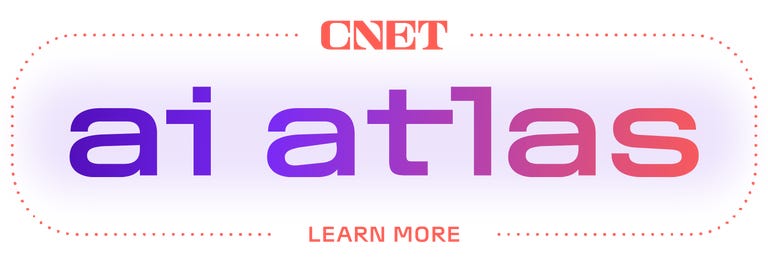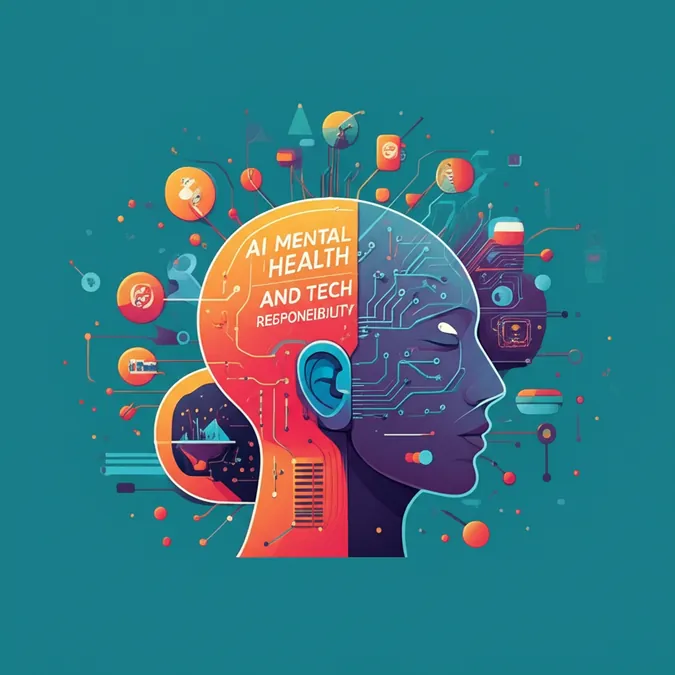Unlock AI Speak With These 52 Key Terms
Artificial intelligence is weaving itself into the fabric of our daily lives. From the widespread use of tools like ChatGPT to Google integrating AI summaries at the top of search results, AI is becoming an undeniable force online. It often feels like having an expert with a Ph.D. in every subject available at your fingertips, ready to provide instant answers.
However, the conversational ability of AI chatbots is just one facet of the vast AI landscape. While it's certainly cool to have ChatGPT help do your homework or use Midjourney to create fascinating images of mechs based on country of origin, the true potential of generative AI could fundamentally reshape global economies. McKinsey Global Institute suggests this could be worth up to $4.4 trillion to the global economy annually. Consequently, you can expect to hear increasingly more about artificial intelligence.
AI is appearing in a rapidly growing array of products. A very brief list includes Google's Gemini, Microsoft's Copilot, Anthropic's Claude, and Perplexity. You can explore reviews, hands-on evaluations, news, explainers, and how-to guides for these and other AI products at our AI Atlas hub.
As society becomes more familiar with an AI-integrated world, new terminology is emerging everywhere. So, whether you're aiming to sound knowledgeable during a discussion or make a strong impression in a job interview, here are some important AI terms you should be familiar with.
This glossary is regularly updated.
Understanding Core AI Concepts
artificial general intelligence, or AGI: A concept that suggests a more advanced version of AI than we know today, one that can perform tasks much better than humans while also teaching and advancing its own capabilities.
artificial intelligence, or AI: The use of technology to simulate human intelligence, either in computer programs or robotics. A field in computer science that aims to build systems that can perform human tasks.
algorithm: A series of instructions that allows a computer program to learn and analyze data in a particular way, such as recognizing patterns, to then learn from it and accomplish tasks on its own.
cognitive computing: Another term for artificial intelligence.
deep learning: A method of AI, and a subfield of machine learning, that uses multiple parameters to recognize complex patterns in pictures, sound and text. The process is inspired by the human brain and uses artificial neural networks to create patterns.
machine learning, or ML: A component in AI that allows computers to learn and make better predictive outcomes without explicit programming. Can be coupled with training sets to generate new content.
neural network: A computational model that resembles the human brain's structure and is meant to recognize patterns in data. Consists of interconnected nodes, or neurons, that can recognize patterns and learn over time.
How AI Learns and Develops
alignment: Tweaking an AI to better produce the desired outcome. This can refer to anything from moderating content to maintaining positive interactions toward humans.
data augmentation: Remixing existing data or adding a more diverse set of data to train an AI.
dataset: A collection of digital information used to train, test and validate an AI model.
end-to-end learning, or E2E: A deep learning process in which a model is instructed to perform a task from start to finish. It's not trained to accomplish a task sequentially but instead learns from the inputs and solves it all at once.
overfitting: Error in machine learning where it functions too closely to the training data and may only be able to identify specific examples in said data but not new data.
parameters: Numerical values that give LLMs structure and behavior, enabling it to make predictions.
quantization: The process by which an AI large learning model is made smaller and more efficient (albeit, slightly less accurate) by lowering its precision from a higher format to a lower format. A good way to think about this is to compare a 16-megapixel image to an 8-megapixel image. Both are still clear and visible, but the higher resolution image will have more detail when you're zoomed in.
tokens: Small bits of written text that AI language models process to formulate their responses to your prompts. A token is equivalent to four characters in English, or about three-quarters of a word.
training data: The datasets used to help AI models learn, including text, images, code or data.
unsupervised learning: A form of machine learning where labeled training data isn't provided to the model and instead the model must identify patterns in data by itself.
zero-shot learning: A test in which a model must complete a task without being given the requisite training data. An example would be recognizing a lion while only being trained on tigers.
Key AI Models and System Architectures
agentive: Systems or models that exhibit agency with the ability to autonomously pursue actions to achieve a goal. In the context of AI, an agentive model can act without constant supervision, such as an high-level autonomous car. Unlike an "agentic" framework, which is in the background, agentive frameworks are out front, focusing on the user experience.
autonomous agents: An AI model that have the capabilities, programming and other tools to accomplish a specific task. A self-driving car is an autonomous agent, for example, because it has sensory inputs, GPS and driving algorithms to navigate the road on its own. Stanford researchers have shown that autonomous agents can develop their own cultures, traditions and shared language.
diffusion: A method of machine learning that takes an existing piece of data, like a photo, and adds random noise. Diffusion models train their networks to re-engineer or recover that photo.
generative adversarial networks, or GANs: A generative AI model composed of two neural networks to generate new data: a generator and a discriminator. The generator creates new content, and the discriminator checks to see if it's authentic.
generative AI: A content-generating technology that uses AI to create text, video, computer code or images. The AI is fed large amounts of training data, finds patterns to generate its own novel responses, which can sometimes be similar to the source material.
large language model, or LLM: An AI model trained on mass amounts of text data to understand language and generate novel content in human-like language.
multimodal AI: A type of AI that can process multiple types of inputs, including text, images, videos and speech.
transformer model: A neural network architecture and deep learning model that learns context by tracking relationships in data, like in sentences or parts of images. So, instead of analyzing a sentence one word at a time, it can look at the whole sentence and understand the context.
weak AI, aka narrow AI: AI that's focused on a particular task and can't learn beyond its skill set. Most of today's AI is weak AI.
Interacting with AI: Inputs, Outputs, and Behaviors
chatbot: A program that communicates with humans through text that simulates human language.
emergent behavior: When an AI model exhibits unintended abilities.
hallucination: An incorrect response from AI. Can include generative AI producing answers that are incorrect but stated with confidence as if correct. The reasons for this aren't entirely known. For example, when asking an AI chatbot, "When did Leonardo da Vinci paint the Mona Lisa?" it may respond with an incorrect statement saying, "Leonardo da Vinci painted the Mona Lisa in 1815," which is 300 years after it was actually painted.
inference: The process AI models use to generate text, images and other content about new data, by inferring from their training data.
latency: The time delay from when an AI system receives an input or prompt and produces an output.
prompt: The suggestion or question you enter into an AI chatbot to get a response.
prompt chaining: The ability of AI to use information from previous interactions to color future responses.
temperature: Parameters set to control how random a language model's output is. A higher temperature means the model takes more risks.
text-to-image generation: Creating images based on textual descriptions.
AI Ethics, Safety, and Societal Considerations
AI ethics: Principles aimed at preventing AI from harming humans, achieved through means like determining how AI systems should collect data or deal with bias.
AI safety: An interdisciplinary field that's concerned with the long-term impacts of AI and how it could progress suddenly to a super intelligence that could be hostile to humans.
anthropomorphism: When humans tend to give nonhuman objects humanlike characteristics. In AI, this can include believing a chatbot is more humanlike and aware than it actually is, like believing it's happy, sad or even sentient altogether.
bias: In regards to large language models, errors resulting from the training data. This can result in falsely attributing certain characteristics to certain races or groups based on stereotypes.
ethical considerations: An awareness of the ethical implications of AI and issues related to privacy, data usage, fairness, misuse and other safety issues.
foom: Also known as fast takeoff or hard takeoff. The concept that if someone builds an AGI that it might already be too late to save humanity.
guardrails: Policies and restrictions placed on AI models to ensure data is handled responsibly and that the model doesn't create disturbing content.
paperclips: The Paperclip Maximiser theory, coined by philosopher Nick Boström of the University of Oxford, is a hypothetical scenario where an AI system will create as many literal paperclips as possible. In its goal to produce the maximum amount of paperclips, an AI system would hypothetically consume or convert all materials to achieve its goal. This could include dismantling other machinery to produce more paperclips, machinery that could be beneficial to humans. The unintended consequence of this AI system is that it may destroy humanity in its goal to make paperclips.
stochastic parrot: An analogy of LLMs that illustrates that the software doesn't have a larger understanding of meaning behind language or the world around it, regardless of how convincing the output sounds. The phrase refers to how a parrot can mimic human words without understanding the meaning behind them.
turing test: Named after famed mathematician and computer scientist Alan Turing, it tests a machine's ability to behave like a human. The machine passes if a human can't distinguish the machine's response from another human.
Notable AI Technologies and Platforms in Use
ChatGPT: An AI chatbot developed by OpenAI that uses large language model technology.
Google Gemini: An AI chatbot by Google that functions similarly to ChatGPT but pulls information from the current web, whereas ChatGPT is limited to data until 2021 and isn't connected to the internet.
Microsoft Bing: A search engine by Microsoft that can now use the technology powering ChatGPT to give AI-powered search results. It's similar to Google Gemini in being connected to the internet.
natural language processing: A branch of AI that uses machine learning and deep learning to give computers the ability to understand human language, often using learning algorithms, statistical models and linguistic rules.
Perplexity: The name of an AI-powered chatbot and search engine owned by Perplexity AI. It uses a large language model, like those found in other AI chatbots, to answer questions with novel answers. Its connection to the open internet also allows it to give up-to-date information and pull in results from around the web. Perplexity Pro, a paid tier of the service, is also available and uses other models, including GPT-4o, Claude 3 Opus, Mistral Large, the open-source LlaMa 3 and its own Sonar 32k. Pro users can additionally upload documents for analysis, generate images, and interpret code.
style transfer: The ability to adapt the style of one image to the content of another, allowing an AI to interpret the visual attributes of one image and use it on another. For example, taking the self-portrait of Rembrandt and re-creating it in the style of Picasso.



